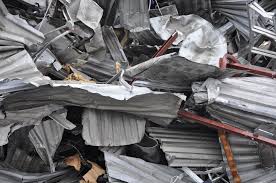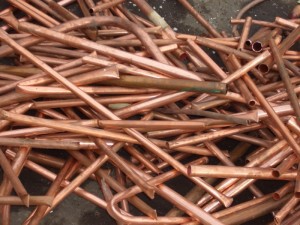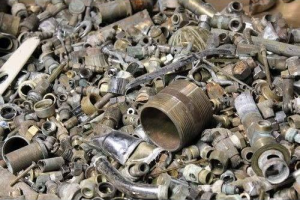Aluminum
Aluminum is a very widely used type of non-ferrous alloy. In its unanodized form, it has a silvery color. Without the addition of alloying elements, it is more ductile and not quite as strong as many steels. However, through the addition of alloying elements and heat treating or work hardening, aluminum can achieve very high strengths. Aluminum is lighter than steel. It forms a protective oxide layer that helps it reduce the risk of detrimental corrosion. Common applications of aluminum include marine equipment such as boat lifts and docks; aerospace equipment such as airplane body material; construction material such as beams and rails; and certain types of cookware.
Copper
Copper is another very popular non-ferrous alloy. Copper is a metal that is somewhere between red and brown in color. In its unalloyed state, it too is softer, more ductile, and not as strong as carbon steel. However, similar to aluminum, copper can be alloyed with a variety of elements to give it improved mechanical properties. When copper is alloyed with tin it is considered bronze. When copper is alloyed with significant amounts of zinc, it is called brass. Common applications of pure copper and its alloyed forms include electrical components such as wires, terminals, and other types of connectors; currency such as the United States or Canadian penny (although just as a coating); pipe for plumbing, tooling, and decorative work.
Nickel
Nickel is another popular non-ferrous alloy. Nickel is known for its toughness, ability to perform in high temperature and low temperature environments, and corrosion resistance. Nickel is not often used in its pure form, and like copper and aluminum, it is often alloyed with other elements to gain superior chemical and mechanical properties. Common applications of nickel and nickel-based alloys include cryogenic equipment such as tanks; hot-section aerospace equipment such as combustion chamber components; and marine equipment.